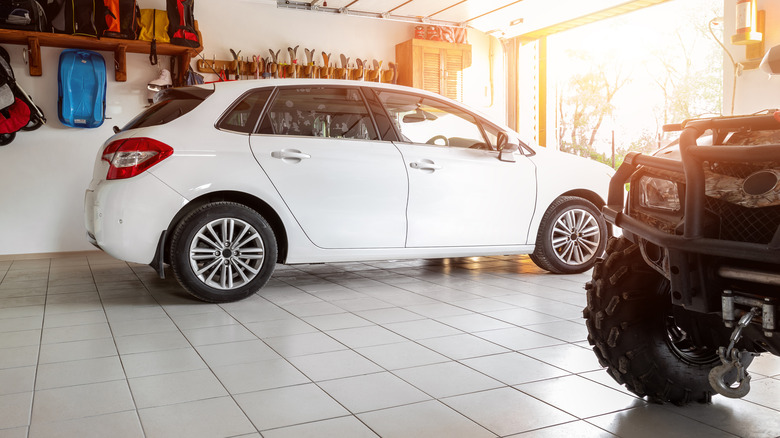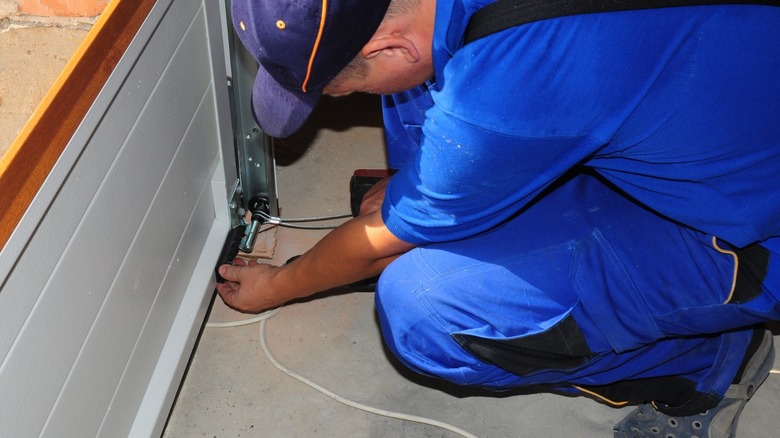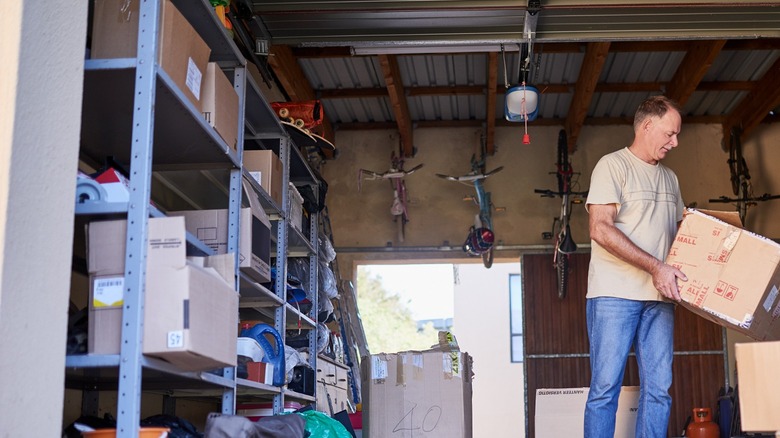The Best Way To Protect Your Garage From Mold Growth
We may receive a commission on purchases made from links.
If you're like most people, your garage has a tendency to be a catch-all; anything that doesn't have a spot goes there and promptly gets forgotten. The next thing you know, there might not even be room for the car! The only problem is it's also a haven for mold growth. Because garages are dark, musty places with minimal air circulation, they make the ideal breeding ground for several common types of mold that grow indoors and pose serious health risks. However, your garage doesn't have to be a musty dungeon; the best way to protect it from mold is by reducing the humidity, which means eliminating and preventing any source of unwanted moisture.
Garages are constantly being exposed to the elements, but we don't want excessive moisture coming inside. As such, one of the first things you'll want to do is check to ensure you don't have any leaks. Leaks in the garage roof can cause water to seep into walls or puddle on the floor. Stored items that may absorb moisture from a leak can then become a haven for mold growth. Mold spreads quickly to other parts of the house and can become a nightmare, so addressing leaks quickly is vital.
Primary culprits for moldy garages
Another culprit can be garage doors, which are notorious for not having a good seal. Generally speaking, the seal may need to be replaced every 5 to 10 years, but this can depend on the quality of the product and installation. To locate potential issues, look for gaps where light is coming through and inspect the seal on the bottom for cracks, wear, and noticeable shrinkage. Of course, water entering your garage after it rains is the most obvious sign of lousy weatherstripping.
If you're handy, replacing the seal or weather stripping yourself is possible, whereas hiring a pro can cost anywhere between $100 and $400. You also might need to adjust the tracking if it's still not sealing correctly. While you're at it, insulating any other garage doors and windows will also help minimize humidity.
The next thing to address is any standing water on the floors. If you wash your car in the driveway, sometimes bringing it inside before it's dry can create standing water. Vehicles wet from excessive rain or snow can also be to blame. The main thing to remember is that anytime you have water in the garage, use a mop or a squeegee to remove it right away.
Additional tips for preventing mold in the garage
Garages routinely kept above 50% humidity are bound to have mold issues, so checking the moisture level occasionally is a no-brainer. To do this, you can pick up a hygrometer on Amazon for about $10. If the space is far too humid, consider using a dehumidifier, which can be especially helpful if your garage stays closed most of the time and has no more room for the car. However, be sure to use the right size unit for the size of your garage.
Proper ventilation is also important, so you might want to put some fans in the garage to help circulate the air. You can also open a window if you have one, or open the garage door and let in some air and sunlight for a couple of hours a day. You'll also want to replace cardboard boxes with plastic bins since plastic won't absorb excess moisture. Or, you can reorganize your garage like a professional and put shelves in to store things off the ground. That said, if you find any mold in your garage, be sure to tackle it immediately before it spreads to other areas of the house. If the area is larger than 3 feet by 3 feet, calling a professional mold removal company for help may be a wise choice.


